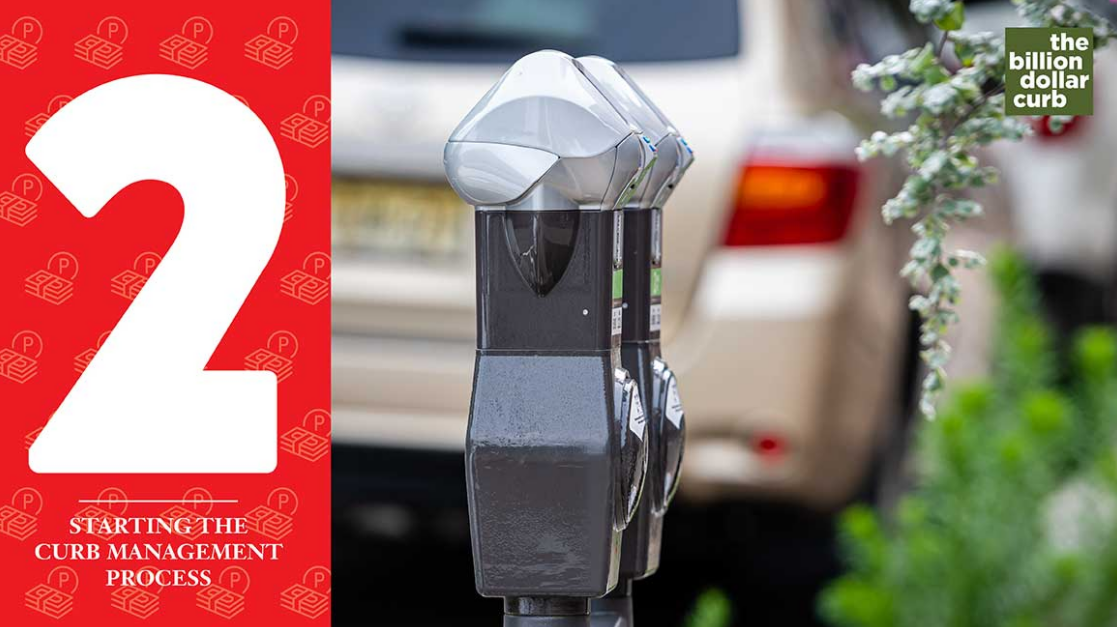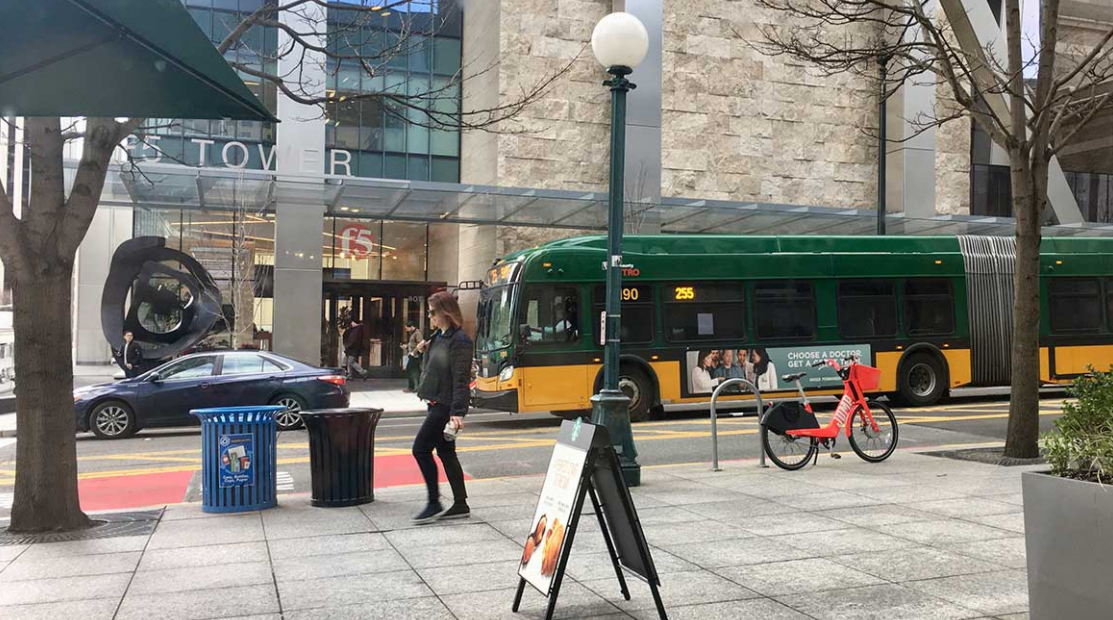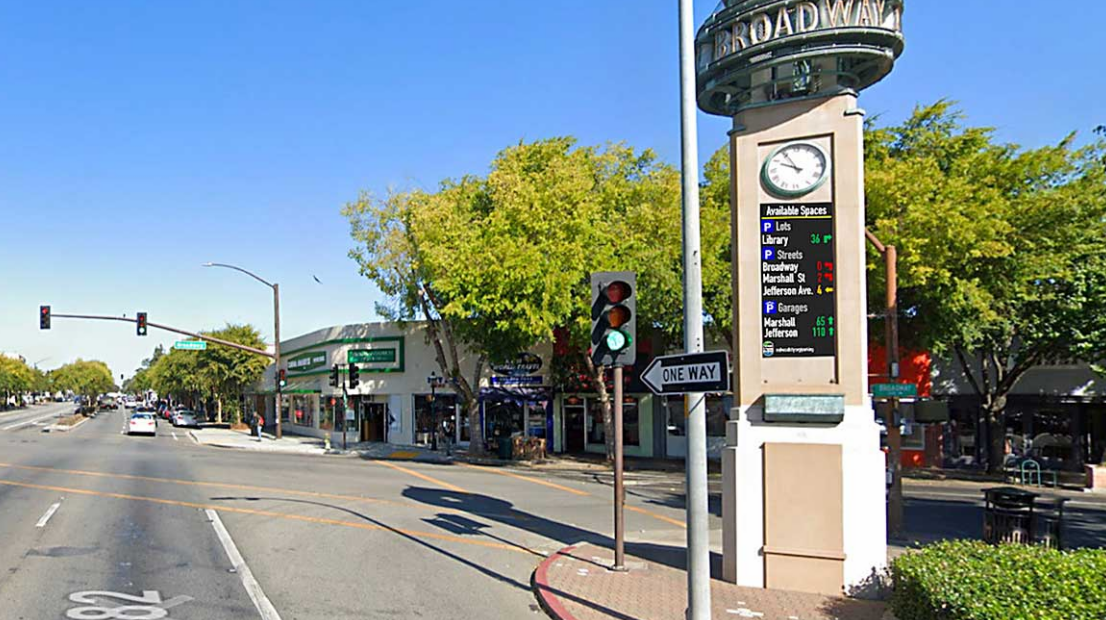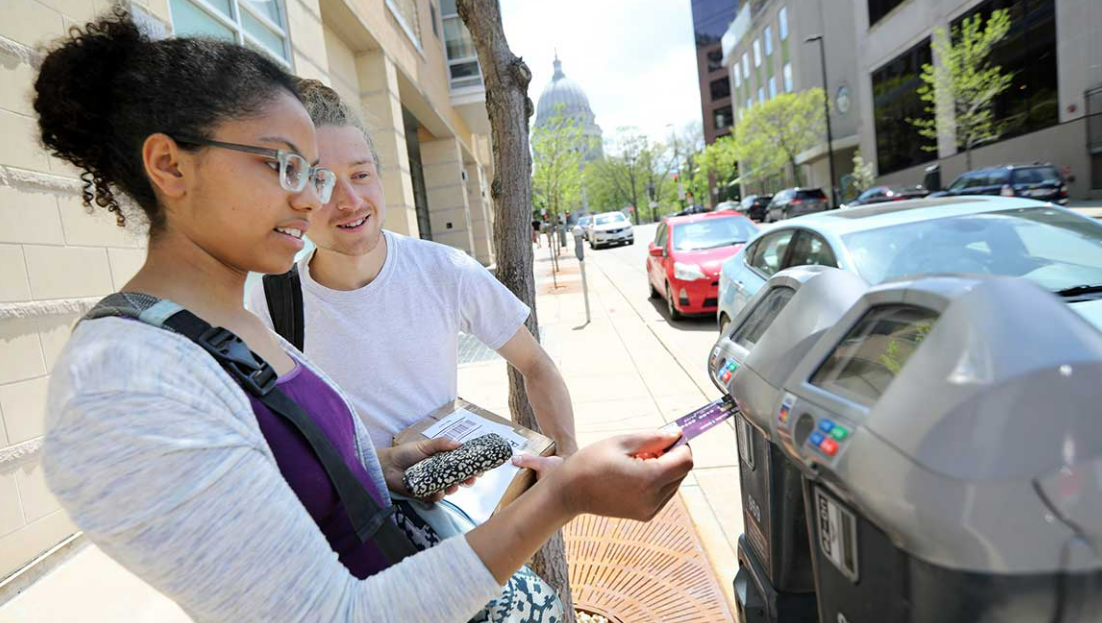The Billion Dollar Curb: 8 Ways to Launch Your Parking Strategy
In its July 2021 issue of Planning, the American Planning Association published the second article in Walker’s “Billion Dollar Curb” series, co-authored by myself, Chrissy Mancini Nichols and my colleague John Dorset, AICP, CPP.
This series combines data from all 50 states with the latest tech solutions to offer a roadmap of equitable and lucrative plans, policies, and pricing strategies to help communities of all sizes better manage the curb. You can read the first installment here.
The newest article explores the step-by-step process to curb management, which starts by improving parking policy and management to ultimately unlock the value of the curb.
Read the full article now in APA’s Planning magazine and below.
The term "curb management" tends to invoke scenes of reserved commercial loading spaces, pickup and drop-off zones, bus stops, parklets, e-bike and scooter racks. The list goes on. But for many cities, residents, and businesses, it all starts with parking.
Curb management is a journey. And while every city is at a different stage based on its density, infrastructure, demand for curb access, and policies and practices already in play, each journey has one big thing in common: the need to account for the transitory nature of our curb uses and needs. That's because this space is no longer stagnant — the curb is a vibrant link between a city's transportation system and land uses.
While parking has long dominated the curb, cities must be open to converting some on-street spaces to more efficient uses that move more people and goods. Those changes often come with pushback from residents and businesses, but that concern tends to be unwarranted: Based on our decades of data collection, off-street parking is often 30 to 50 percent vacant (or more) during typical peak hours in a majority of cities, while on-street parking supplies often account for less than 10 percent of a city's total parking capacity.
Most policy change is incremental, and it takes time and education to help bring the public along. If the goal is a dynamic curb that squeezes the most efficiency out of that space ― to generate revenue, move more people, advance goals for climate change and transportation equity, support local businesses, and increase active transportation ― the process starts with parking as our baseline.
Sound parking management policies can begin the education process with the community by demonstrating the value locked up in curb space. And while the infrastructure, technology, data, partnerships, policies, staffing, and funding necessary to create and manage these strategies are complex, we can also take lessons from parking best practices to improve our overall curb management.
Seattle's Flex Zones plan prioritizes curb-based goals and the surrounding land use. Photo courtesy of Seattle Department of Transportation.
1. CREATE A HOLISTIC, DATA-BASED PLAN.
Parking is not an island in itself; it's one element of a transportation program. On-street and off-street parking, transit, walking, biking, and curb management must be connected to plan for how many vehicles ― and more importantly people ― are provided access. An example of a holistic program is one that aligns transportation with access, equity, economic development, climate, and financial goals. Seattle's Flex zones, for example, prioritize these curb goals through policies and practices that support uses of the curb that go far beyond providing only on-street parking. Specific Flex zone functions include mobility, access for people, access for commerce, activation, greening, and storage. All of these functions are considered, and this space is regulated based on the city's comprehensive plan and adjacent land uses.
In Redwood City, Calif., Cleverciti's parking system will be applied to 400 on-street spaces, seven surface lots, and 11 garages, totaling more than 4,500 parking spaces and will integrate with multiple payment apps. Photo courtesy of Cleverciti.
2. EMBRACE TECHNOLOGY TO COMMUNICATE AND ACCEPT PAYMENT.
When we ask people what they want out of parking and curb management, we routinely hear two words: easy and convenient. A spectrum of technology tools can help make that happen as we transition to a dynamic curb. In Redwood City, California, easy-to-understand wayfinding and signage were installed to educate people about where and how to park. Now, the city is using Automated Parking Guidance System (APGS) technology to show people where parking is available to reduce circling and save time.
Many cities like Atlanta are proving that mobile payments are another way technology can make payments easier and more convenient, encourage compliance with policies and regulations, increase revenue, and reduce capital and operating costs by reducing the need for physical equipment. Mobile payment platforms can also integrate payments for multiple forms of transportation, setting the stage for future curb management. Omaha, Detroit, and Charlotte, for example, are testing the use of one mobile payment system for parking both vehicles and scooters, making for a more seamless customer experience and streamlined city process.
3. VALUE THE SPACE WITH APPROPRIATE PRICING.
Curb space has become an undervalued free-for-all, and cities are leaving billions in revenue on the table. Adequately pricing parking in high-demand areas increases capacity, manages access, and conveys the value of the curb to the community — plus helps cities prepare to price for other uses like commercial delivery and passenger pickup. Pricing should vary by demand, day, time, and location. Rates can be set to recoup program costs and even fund mobility and access improvements but should primarily be used to efficiently manage and allocate a scarce resource.
Demand-based parking pricing has been implemented in San Francisco, Seattle, and Washington, D.C. through programs backed by utilization data that is used to adjust meter rates based on occupancy targets. Pricing based on demand ensures that at least one spot per block is available to increase convenience, prevent cruising for a spot, and utilization.
Key to the success of a demand-based parking pricing program is granting policy flexibility for the transportation director to increase or decrease rates based on established metrics and data, such as an occupancy goal of between 60 to 80 percent. What does not work: when city council must approve every single parking rate amendment. It's inefficient and tends to lead to decisions based primarily on politics.
Demand-based pricing can be intensive to administer. It's important to have a clear understanding of the infrastructure and data available for implementation. After receiving a $25 million grant from the U.S. Department of Transportation, San Francisco now has a very sophisticated data infrastructure warehouse used to automatically change parking rates by block based on demand. Rates are adjusted every three months in $0.25 increments.
Such a program is hard to replicate without similar resources and in a smaller city and without the benefit of a $25 million federal grant. Seattle's more achievable, lower-budget program originally relied on annual data collection of parking occupancy across the city and an annual rate adjustment. Now, the city uses historical data to model demand with on-the-ground data collection in some areas for validation. Rates are adjusted quarterly and vary by neighborhood instead of per block. Washington, D.C., meanwhile, uses cameras and payment data sampling to update pricing.
Demand-based pricing in Washington, D.C adjusts meter rates based on utilization data. Parking meter rates on individual blocks range from $1.00 to $6.50 and vary by time period. 2019 map courtesy of District Department of Transportation.
Zonal-based pricing can be a lower-intensive pricing strategy that acknowledges the variance in curb value throughout the city by levying higher or lower pricing based on parking demand and geography. For example, Sacramento's zonal-based program prices parking by area and hour: four zones have rates ranging from $1.75 to $3.75 per hour, depending on the location and length of stay. For example, in Zone 1, the area with the most parking demand, the base hourly meter rate is $1.75 and increases to $3.00 in the second hour, and $3.75 per hour for three or more hours.
Flex pricing allows cities to productively influence consumer behaviors by lowering rates in the early morning and late afternoon and increasing them at lunch, dinner, and during events. Des Moines, Iowa charges higher rates for parking after 5 pm in its Historic Court Avenue entertainment zone to create consistent utilization and ensure supply, helping to increase retail and dining revenues for business owners and contribute to a more vibrant area.
Evenings and weekend pricing is another lucrative approach. Businesses wouldn't give away a prime asset during times of high demand, and neither should cities. Places motivated to provide higher levels of customer service charge for on-street parking during evenings and weekends, some of the busiest times in areas chock full of restaurants, shops, and entertainment. Denver even charges for overnight parking in response to requests from business.
4. PRICE TO RECOUP COSTS AND ENCOURAGE MODES OTHER THAN DRIVING.
It is good parking policy to set rates to recoup infrastructure, administrative, and enforcement costs, which will only grow as more people vie for curb space.
But parking pricing is about more than just revenue. Because people respond to both pricing and convenience, charging for parking or even limiting supply is one of the best ways to support sustainability goals by increasing the number of people who walk, bike, or use available transit.
If you do limit supply, be sure to give people other travel options. Austin, for example, permits residents and businesses to create parking management districts with a portion of the revenue (less city expenses) allocated to local improvements that increase walking, cycling, and transit use. Remember: The destination is the draw. Swapping land devoted to parking for something that creates greater public interest can be a significant win for residents, businesses, and the city.
The coordinated parking rates in Madison, Wisconsin, create higher on-street parking rates for short-term access to the curb. Lauralyn Rosenberger, left, and Mason Purtell, use a "smart" meter to pay for their downtown parking space. Photo by Amber Arnold/State Journal.
5. COORDINATE ON-STREET AND OFF-STREET RATES TO SUPPORT A "PARK ONCE" STRATEGY.
Parking spaces at the curb are premium real estate for consumers who need convenient and short-term access to a business. Employees and other long-term parkers should not monopolize that asset. Instead, these spaces should be priced higher to reflect their value (in many cities, the opposite is currently happening).
An example of a city doing it right is Madison, Wisconsin. Madison prices parking in most off-street facilities at lower rates than on-street spaces. This allows more vehicles to park during the day in the most desirable locations and encourages employees and other long-term parkers to use spaces on the periphery that may otherwise sit empty.
This policy is also a "park once" strategy, giving long-term visitors time to spend in a commercial area without concern over moving their vehicle. At the same time, there is more short-term parking capacity in the highest demand areas to make it easier to park in those spaces, increasing the total number of people able to park in front of storefronts.
6. ENSURE EQUITY.
Mobility goals should be aligned with equity goals. To that end, parking revenue can be allocated to fund more travel options for low-income residents and visitors. For example, Boulder, Colorado, funds its EcoPass, a low-cost or free transit pass, with parking revenue. Reduced rates at periphery parking can ensure that people across the income range who need to drive and park can also afford to do so. Austin's Affordable Parking Program supports service and entertainment industry workers by providing low-cost evening parking permits. This helps to create parking equity and encourage the efficient use of off-street facilities.
7. ALIGN ON-STREET PARKING PRICING WITH OFF-STREET PARKING REQUIREMENTS.
Any policy of reducing or eliminating parking minimums must be combined with targeted on-street parking pricing and management policies to eliminate street spill-over and make the policy work. When San Francisco eliminated parking minimums, it could bank on SFPark, the city's demand-based parking pricing program to keep residents and employees from migrating to prime curb spaces needed for local business customers.
8. ENFORCE THE RULES.
Curbs are a finite commodity and need turnover to ensure that spaces are available for customers. A city can create turnover through time limits, pricing, or both, but without enforcement, it is unlikely either will work. Enforcement is less about revenue and more about efficiently allocating a scarce resource. The best run programs have staff with a dedicated focus and a customer service approach to ensure people adhere to regulations.
Fines should be set at an amount that encourages compliance. For example, fines for parking at an expired parking meter in Annapolis ($40), Honolulu ($50), Phoenix ($84), and Trenton, New Jersey, ($70) are at a point high enough to discourage overtime parking.
We typically recommend an amount equal to at least 1.5 times the rate for the daily maximum price for overtime parking. For example, using an on-street rate of $2.00 per hour with 10-hours of operation, the parking citation fine amount would be $30. Parking fines should be set higher for violations that impede travel choice, like parking in a bike lane and increase for repeat offenders.
Before we can tackle the growing demands of the curb, we must first learn what has worked for its most prominent use: parking. Goal setting, pricing, enforcement, infrastructure, equity, technology, and customer service are all lessons that cities can take as they pave their curb management journey to plan for today's digital curbs.







